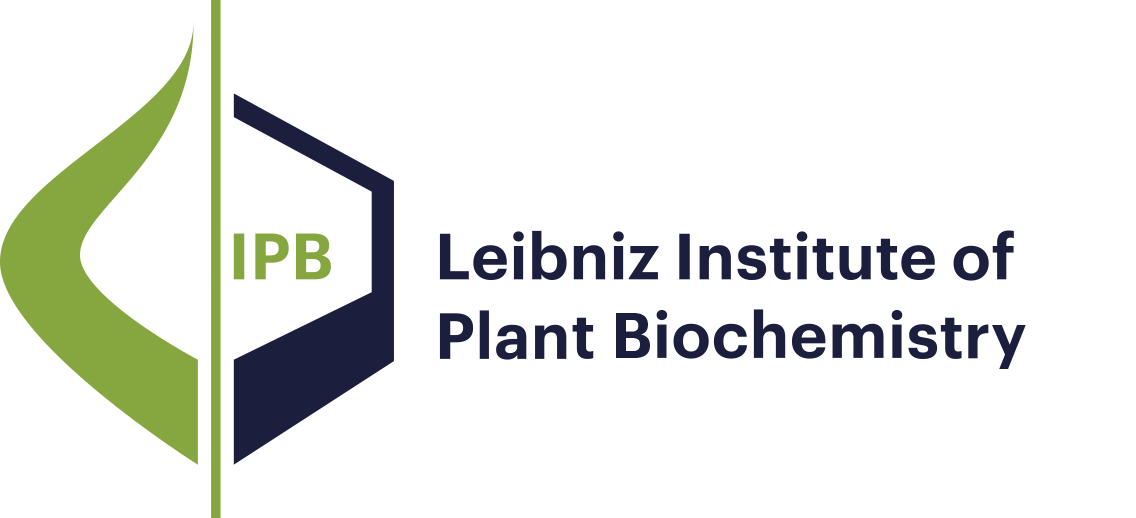- Results as:
- Print view
- Endnote (RIS)
- BibTeX
- Table: CSV | HTML
Publications
Publications
Research Mission and Profile
Molecular Signal Processing
Bioorganic Chemistry
Biochemistry of Plant Interactions
Cell and Metabolic Biology
Independent Junior Research Groups
Program Center MetaCom
Publications
Good Scientific Practice
Research Funding
Networks and Collaborative Projects
Symposia and Colloquia
Alumni Research Groups
Publications
Dalbergia melanoxylon Guill. & Perr (Fabaceae) is widely utilized in the traditional medicine of East Africa, showing effects against a variety of ailments including microbial infections. Phytochemical investigation of the root bark led to the isolation of six previously undescribed prenylated isoflavanones together with eight known secondary metabolites comprising isoflavanoids, neoflavones and an alkyl hydroxylcinnamate. Structures were elucidated based on HR-ESI-MS, 1- and 2-D NMR and ECD spectra. The crude extract and the isolated compounds of D. melanoxylon were tested for their antibacterial, antifungal, anthelmintic and cytotoxic properties, applying established model organisms non-pathogenic to humans. The crude extract exhibited significant antibacterial activity against Gram-positive Bacillus subtilis (97% inhibition at 50 μg/mL) and antifungal activity against the phytopathogens Phytophthora infestans, Botrytis cinerea and Septoria tritici (96, 89 and 73% at 125 μg/mL, respectively). Among the pure compounds tested, kenusanone H and (3R)-tomentosanol B exhibited, in a panel of partially human pathogenic bacteria and fungi, promising antibacterial activity against Gram-positive bacteria including methicillin-resistant Staphylococcus aureus (MRSA) and Mycobacterium showing MIC values between 0.8 and 6.2 μg/mL. The observed biological effects support the traditional use of D. melanoxylon and warrant detailed investigations of its prenylated isoflavanones as antibacterial lead compounds.
Publications
Over the past decades, Colombia has suffered complex social problems related to illicit crops, including forced displacement, violence, and environmental damage, among other consequences for vulnerable populations. Considerable effort has been made in the regulation of illicit crops, predominantly Cannabis sativa, leading to advances such as the legalization of medical cannabis and its derivatives, the improvement of crops, and leaving an open window to the development of scientific knowledge to explore alternative uses. It is estimated that C. sativa can produce approximately 750 specialized secondary metabolites. Some of the most relevant due to their anticancer properties, besides cannabinoids, are monoterpenes, sesquiterpenoids, triterpenoids, essential oils, flavonoids, and phenolic compounds. However, despite the increase in scientific research on the subject, it is necessary to study the primary and secondary metabolism of the plant and to identify key pathways that explore its great metabolic potential. For this purpose, a genome-scale metabolic reconstruction of C. sativa is described and contextualized using LC-QTOF-MS metabolic data obtained from the leaf extract from plants grown in the region of Pesca-Boyaca, Colombia under greenhouse conditions at the Clever Leaves facility. A compartmentalized model with 2101 reactions and 1314 metabolites highlights pathways associated with fatty acid biosynthesis, steroids, and amino acids, along with the metabolism of purine, pyrimidine, glucose, starch, and sucrose. Key metabolites were identified through metabolomic data, such as neurine, cannabisativine, cannflavin A, palmitoleic acid, cannabinoids, geranylhydroquinone, and steroids. They were analyzed and integrated into the reconstruction, and their potential applications are discussed. Cytotoxicity assays revealed high anticancer activity against gastric adenocarcinoma (AGS), melanoma cells (A375), and lung carcinoma cells (A549), combined with negligible impact against healthy human skin cells.

